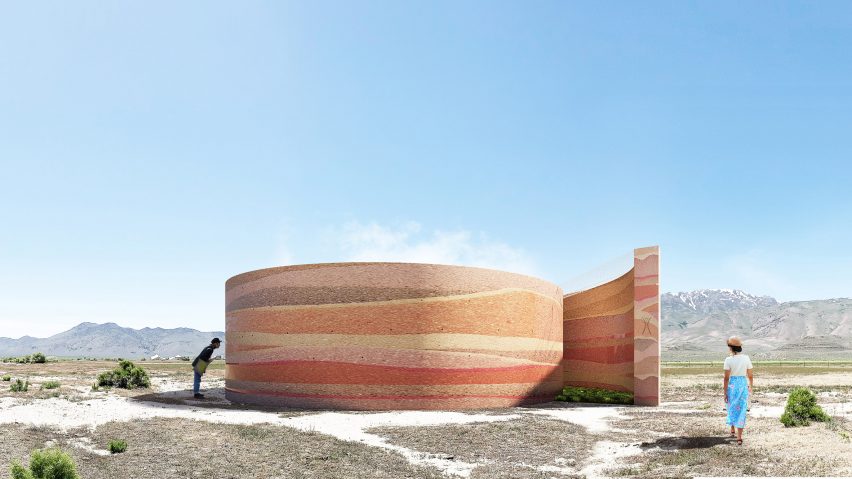
Top ten designs for Burning Man's off-grid desert outpost Fly Ranch revealed
The top 10 designs for Fly Ranch, a permanent outpost of the Burning Man festival, include an orchard planted in a rammed earth spiral and thatched composting toilets.
LAGI 2020 Fly Ranch is a collaboration between Burning Man and the Land Art Generator Initiative (LAGI), which plans to build sustainable structures on a 3,800-acre ranch in Nevada's Black Rock Desert.
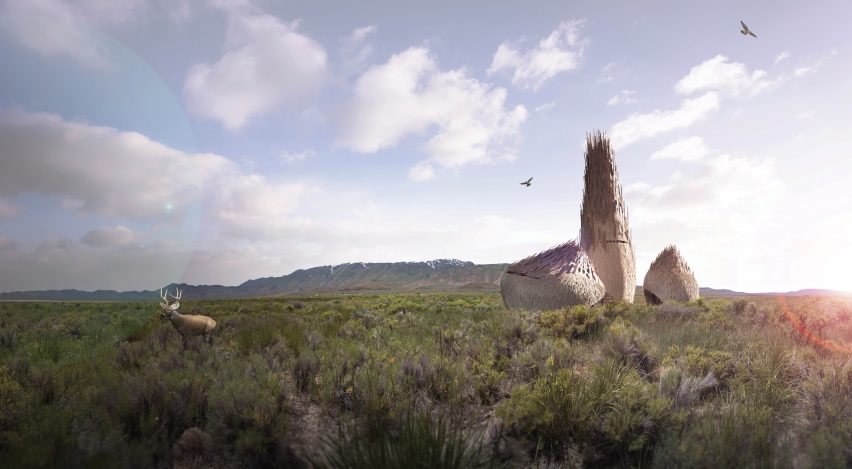
These 10 projects have been selected by a jury from 200 entries to the LAGI 2020 Fly Ranch design challenge.
Studios were invited to come up with designs that could sustainably offer shelter, produce energy, manage waste and water and provide food for the site.
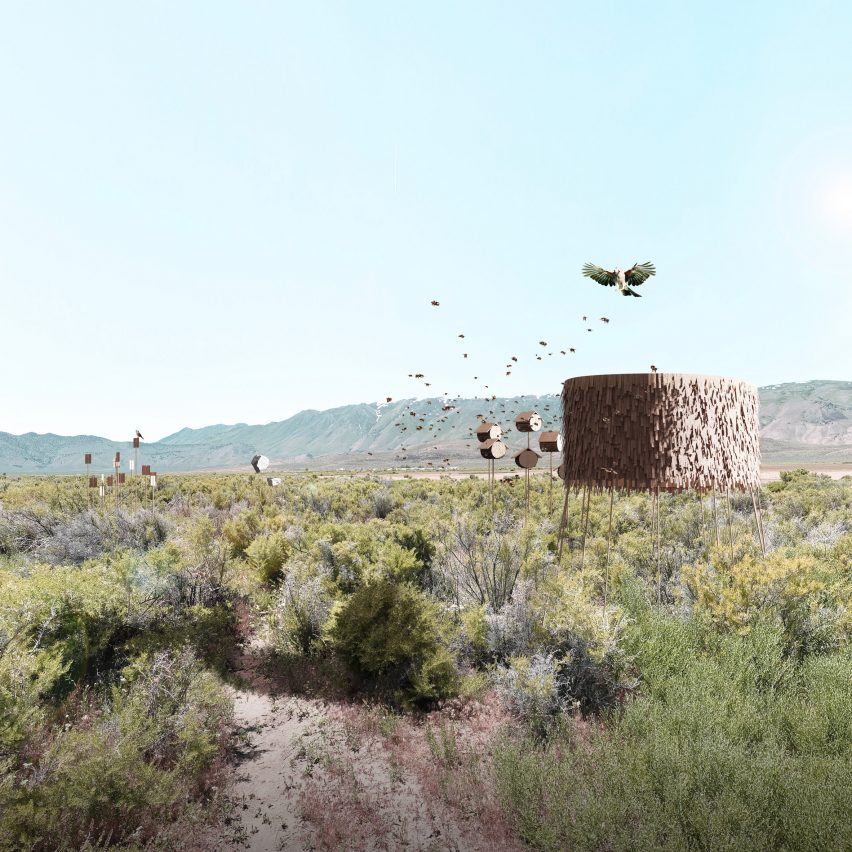
Lodgers, by MIT-based duo by Zhicheng Xu and Mengqi Moon, is a design for composting toilets and an education space made from reclaimed timber and thatch.
Xu and Moon used script-generated parametric design to create the shapes of the Lodgers buildings, which will include habitat enrichment such as birdhouses and beehives for some of the species that live around Fly Ranch.
Lodgers was the project ranked highest by the jury, which included members of local indigenous communities, scientists, artists, conservationists and landscape architects.
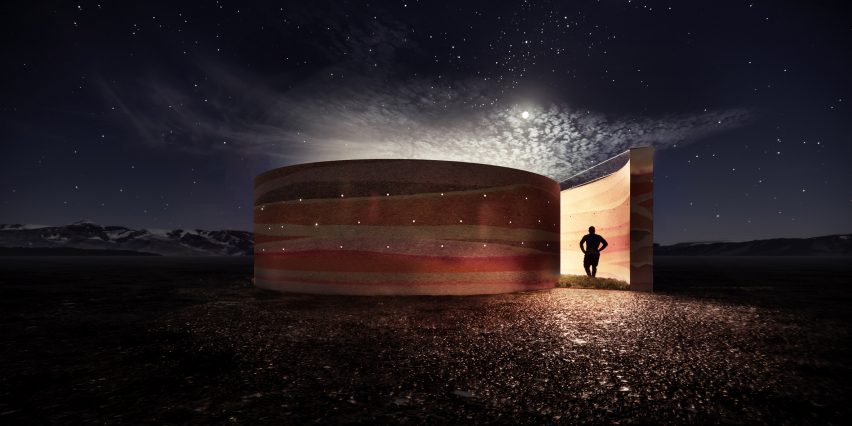
Polish team Mateusz Góra and Agata Gryszkiewicz designed a spiralling rammed-earth structure called The Source, which could shelter an orchard to grow fruit for Fly Ranch.
Góra and Gryszkiewicz drew on 15th-century fruit walls, a low-energy alternative to greenhouses that uses masonry to absorb heat over the day and release it at night. The rammed-earth walls could create a consistent microclimate in the desert, where temperatures plunge at night.
Perforations in The Source's walls would provide homes for pollinating insects and be lit up from inside at night to create a starry effect.
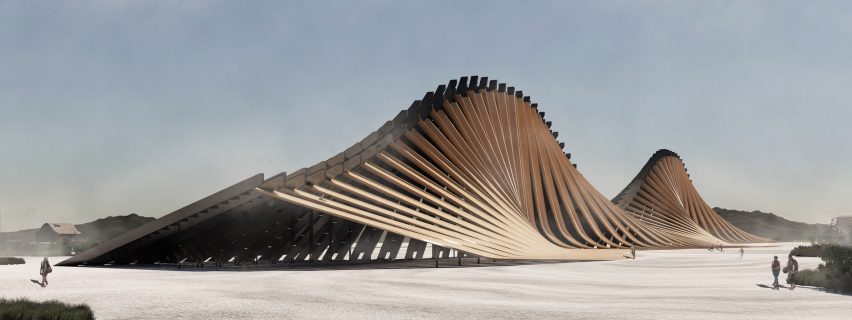
Indian duo Nuru Karim and Anuj Modi's project Solar Mountain is a prefabricated installation made of recycled plywood that would be covered in solar 728 solar panels.
Veil, by American designer Jamieson Pye, is a concept for zero-waste residences that could grow their own food using sunken Walipini greenhouses.
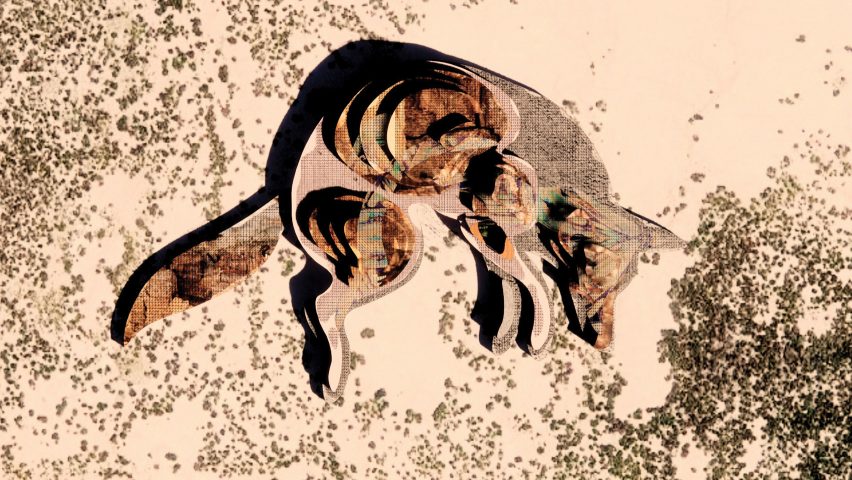
Coyote Mountain is a complex of laboratories, greenhouses, artists studios and waste management facilities arranged to look like a pouncing coyote when seen from above.
US design trio Dusty Michael, Jane Maru, and Anna Meloyan suggested using rammed earth covered with poly mesh for their design, which could be covered in luminescent solar concentrators to collect radiation from the sun and convert it into electricity.
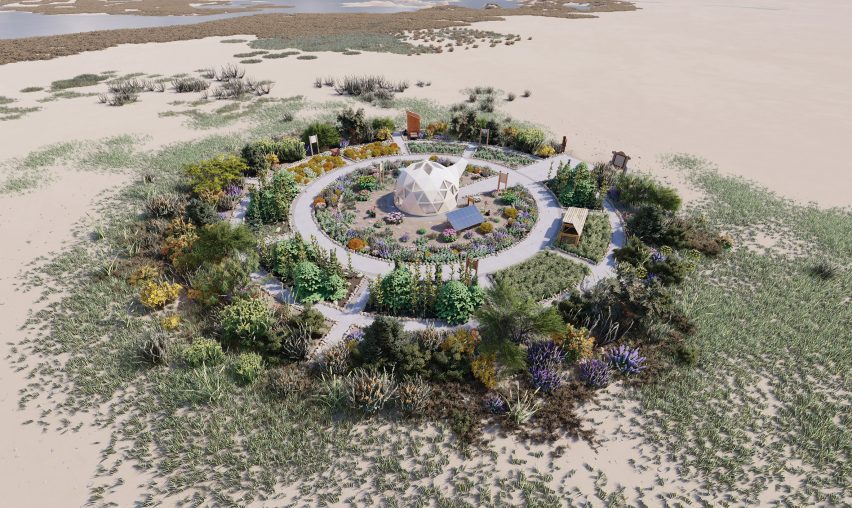
Also in the top ten is Ripple, which consists of concentric rings of permaculture gardens that radiate out from a geodesic dome that would contain a seed bank and library.
Ripple was designed by US team Matthew Lagomarsino, William Jacob Mast, Pierre-Yves Bertholet, Xiaojin Ren, Scherwyn Udwadia, Bas Kools, Israel Orellana, Melika Tabrizi.
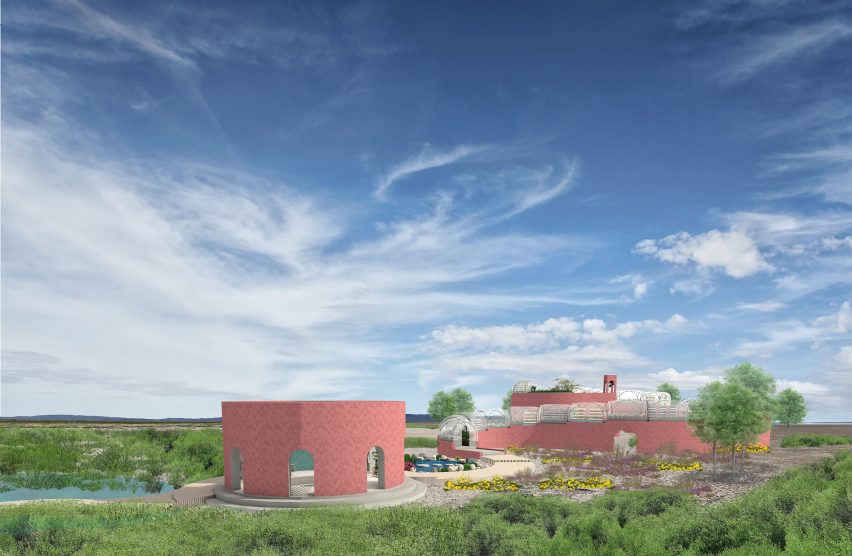
Swedish team Mathias Gullbrandson, Anna Johansson, Per Dahlgren, Julia Andersson, and Olle Bjerkås designed The Loop, a pink toilet that would process human waste and turn it into fertiliser for hydroponic gardens.
Kiba paa'a, by French team Javier Irigaray, Josien Visser, Mara Equisoain, Deyo Maeztu-Redin, and Silvia Larripa, is a proposal to revise Fly Ranch's existing water management strategy using small landscape interventions to channel seasonal rains.
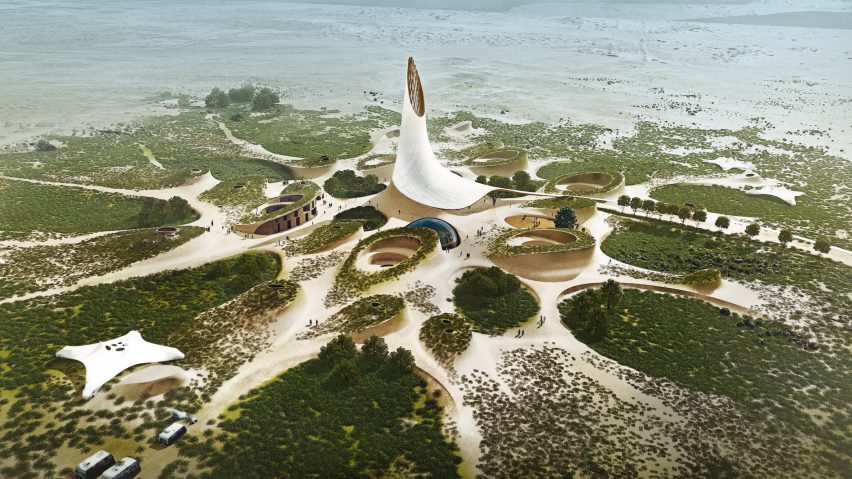
SEED is a proposal for a series of semi-underground biodigestors, aquaponics farms and greenhouses regulated by a solar chimney erupting from the desert landscape.
Its design was submitted by a US team of Samantha Katz, Woody Nitibhon, Henry O'Donnell, Samantha Katz, Lola Lafia, Eric Baczuk, John Hilmes, Max Schwitalla, and Colin O'Donnell.
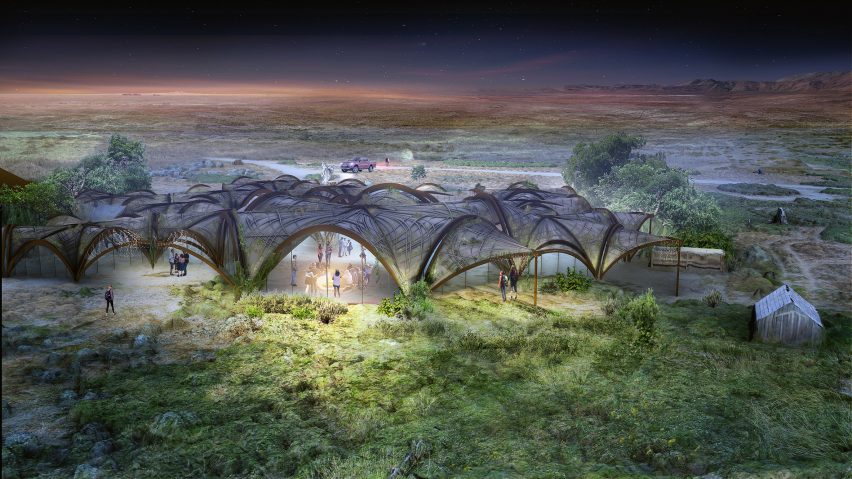
Semi-open-air pavilions called Nexus could be used to explore the potential of building with Ferrock, a concrete alternative made from construction waste that absorbs carbon dioxide during the curing process.
Nexus was designed by the UK-based team of Antoniya Stoitsova, Nicolo Bencini, Ben Naudet, Avi Greene, Alex Ogata, and Tom Kendrew.
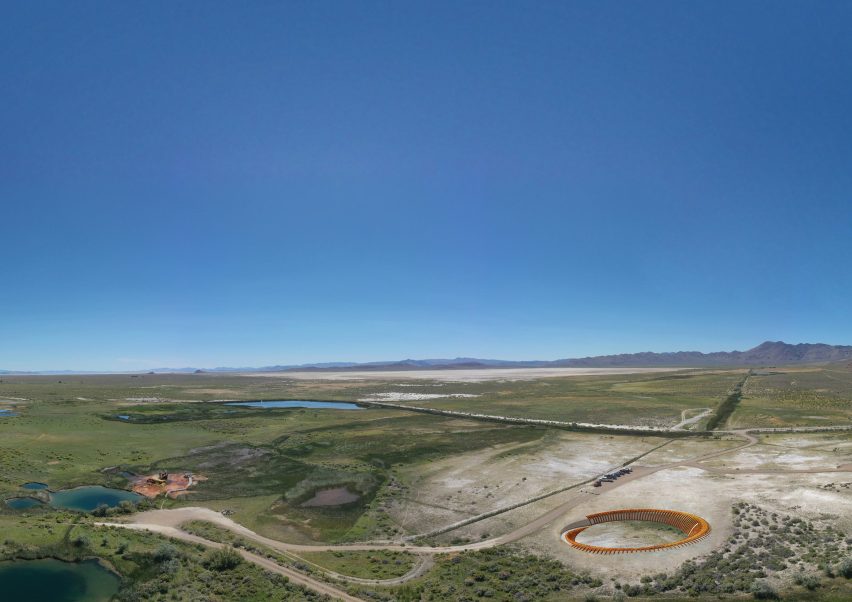
The Burning Man festival involves people coming together to form a temporary art community that leaves no trace on the desert.
Fly Ranch, which is located north of the annual festival site, will be a year-round extension of this movement where designers can test sustainable projects.
Some of the selected design teams will now be given an honorarium grant to build prototypes on-site at Fly Ranch to test their installations.
"We hope that the majority of the proposals will be built at Fly Ranch or elsewhere in the future," said Fly Ranch director Matt Sundquist.
Burning Man was cancelled in 2020 due to the pandemic, so Arthur Mamou-Mani designed a virtual pavilion instead.
Images courtesy of LAGI.